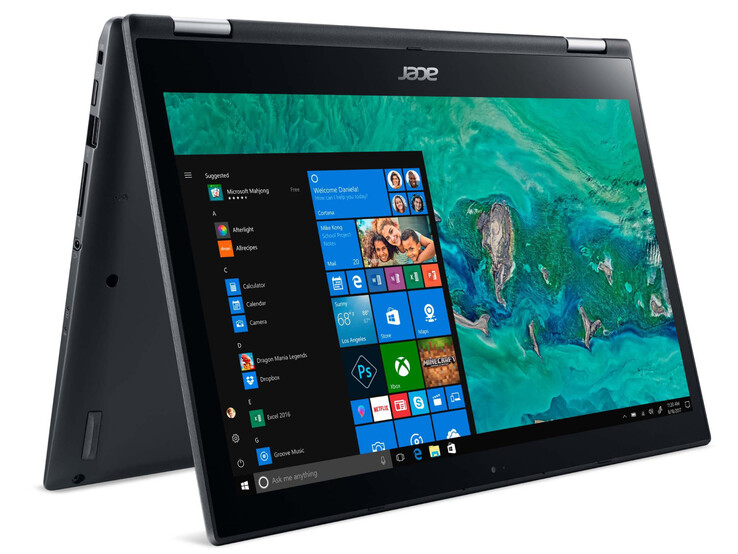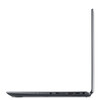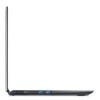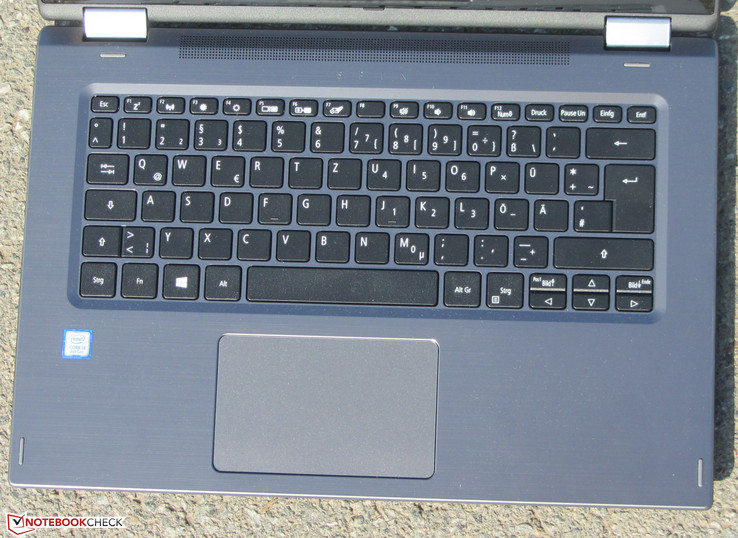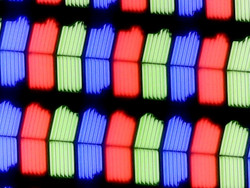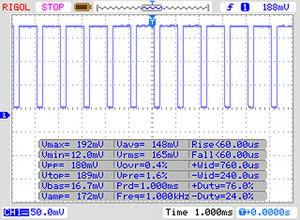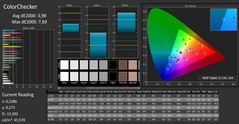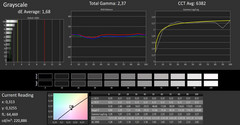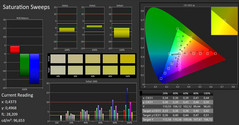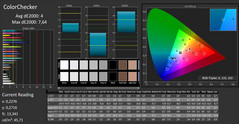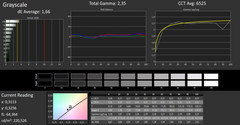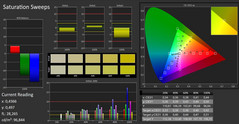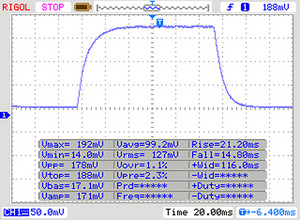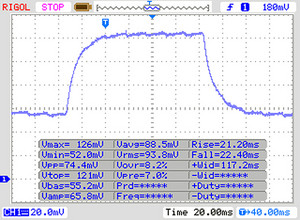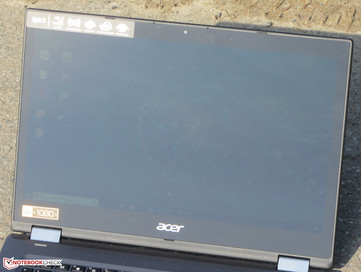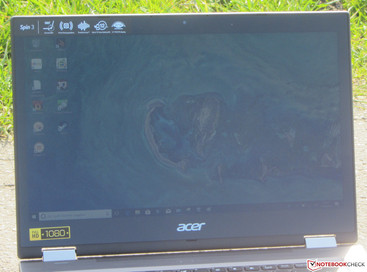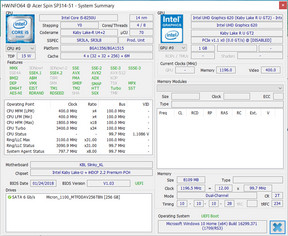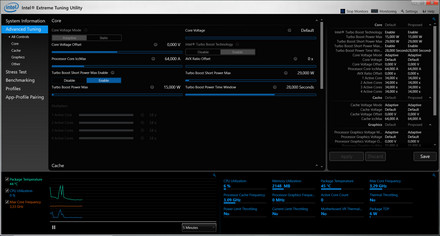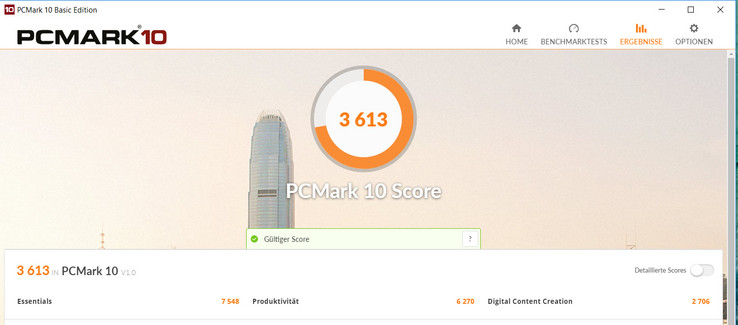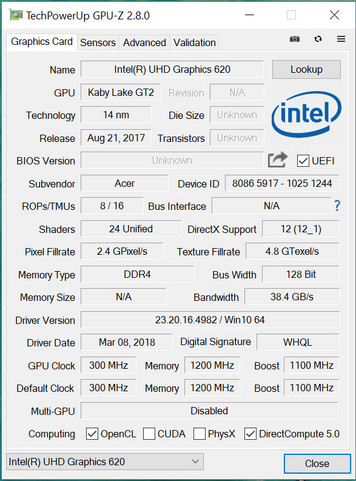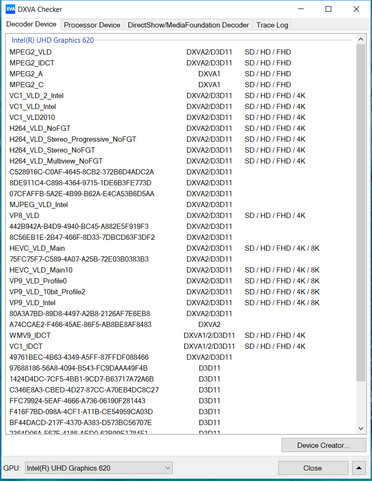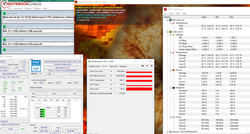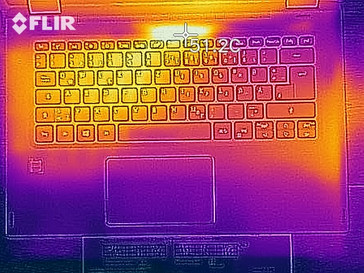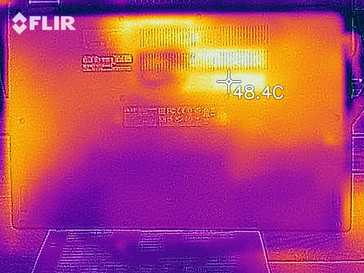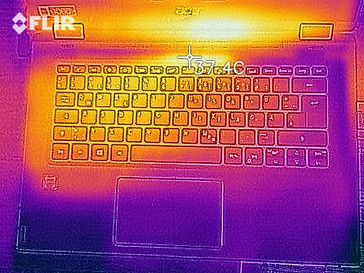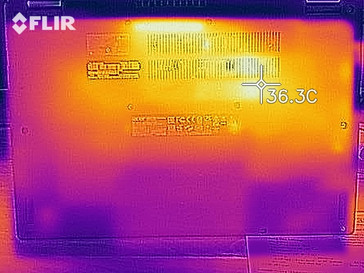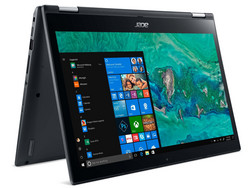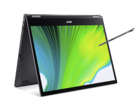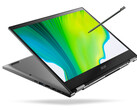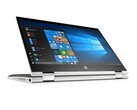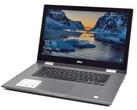Acer Spin 3 SP314-51 (i5-8250U, SSD, FHD) Convertible Review

After reviewing the representatives from the Spin 1, Spin 5 and Spin 7 series, we have now moved on to review a model from the Spin 3 series. To be more exact, what we have here is a 14-inch mid-range, convertible notebook (SP314-51). The convertible is powered by a ULV quad-core Kaby Lake Refresh CPU. The competitors of the Spin 3 include: the Asus VivoBook Flip 14 TP410UA, the Lenovo Yoga 520-14IKB and the HP Pavilion x360 14.
Case & Connectivity - Acer forgoes a USB Type-C port with the Spin 3
The Spin 3 does not feature a metal case. Its case is made mostly of plastic. The upper side of the chassis and the display lid are gray, while the underside is black. Moreover, the upper side of the chassis (brushed) and the display lid (straight lines) are adorned with textured patterns. The build quality falls short of what we would desire. It could be improved in terms of rigidity: The chassis exhibits a lot of flex. The battery is soldered in. The laptop does not offer a maintenance hatch.
The Spin 3 offers three USB ports (two USB 3.1 Gen 1 ports, and one USB 2.0 port). However, all three ports are USB Type-A ports. The laptop does not feature Type-C ports. There is an HDMI port for video output. The built-in SD card reader works slowly: When copying large chunks of data, we measured a maximum speed of 24.8 MB/s. The transfer of 250 JPG image files was completed with a transfer speed of 20.6 MB/s. We test the SD card reader by means of a reference SD card (Toshiba Exceria Pro SDXC 64 GB UHS-II).
The Wi-Fi module comes from Qualcomm (QCA6174). Besides the Wi-Fi standards 802.11 a/b/g/n, it also supports the fast AC standard. The data transfer speeds that we have measured under the optimal conditions (no other Wi-Fi-enabled devices in close proximity, a short distance between the notebook and the server PC) are in good order.
Ports
| SD Card Reader | |
| average JPG Copy Test (av. of 3 runs) | |
| HP Pavilion x360 14-ba011ng (Toshiba Exceria Pro SDXC 64 GB UHS-II) | |
| Lenovo Yoga 520-14IKB 80X80097GE (Toshiba Exceria Pro SDXC 64 GB UHS-II) | |
| Average of class Convertible (28.1 - 209, n=23, last 2 years) | |
| Asus VivoBook Flip 14 TP410UA-EC242T (Toshiba Exceria Pro SDXC 64 GB UHS-II) | |
| Acer Spin 3 SP314-51-548L (Toshiba Exceria Pro SDXC 64 GB UHS-II) | |
| maximum AS SSD Seq Read Test (1GB) | |
| Average of class Convertible (28.9 - 253, n=22, last 2 years) | |
| Lenovo Yoga 520-14IKB 80X80097GE (Toshiba Exceria Pro SDXC 64 GB UHS-II) | |
| HP Pavilion x360 14-ba011ng (Toshiba Exceria Pro SDXC 64 GB UHS-II) | |
| Asus VivoBook Flip 14 TP410UA-EC242T (Toshiba Exceria Pro SDXC 64 GB UHS-II) | |
| Acer Spin 3 SP314-51-548L (Toshiba Exceria Pro SDXC 64 GB UHS-II) | |
Input Devices - The SP314-51 does not feature a keyboard backlight
Acer has equipped the Spin 3 with a chiclet-style unlit keyboard. The flat, slightly rough keys have a short travel distance and a clear actuation point. During typing, the central area of the keyboard exhibits some flex. However, this does not prove to be annoying. All in all, Asus delivers an “okay” keyboard here that will satisfy anyone who has to type on a regular basis.
The multitouch-enabled ClickPad occupies an area of some 10.5 x 6.5 cm (4.1 x 2.5 in). Therefore, there is enough space for the use of gesture controls. The smooth surface of the pad makes finger-gliding easy. The ClickPad has a short travel distance and a clear actuation point.
The Spin 3 comes with a 10-finger multitouch screen. It works well and responds promptly to inputs.
Display - The Acer laptop comes with a dim screen
The 14-inch touch-enabled display of the Spin 3 operates with a native resolution of 1920x1080. The screen offers a good contrast ratio of 1222:1. However, the display brightness of 220.9 cd/m² is too low. Here, we would like to see a brightness of at least 300 cd/m².
Acer uses PWM for brightness control. Unfortunately, the display exhibits PWM flickering with a frequency of 1000 Hz at all brightness levels. Because of such a high frequency, even susceptible individuals should not experience any adverse effects such as headaches and eyestrain.
| |||||||||||||||||||||||||
Brightness Distribution: 78 %
Center on Battery: 220 cd/m²
Contrast: 1222:1 (Black: 0.18 cd/m²)
ΔE ColorChecker Calman: 3.98 | ∀{0.5-29.43 Ø4.78}
calibrated: 4
ΔE Greyscale Calman: 1.68 | ∀{0.09-98 Ø5}
58% sRGB (Argyll 1.6.3 3D)
38% AdobeRGB 1998 (Argyll 1.6.3 3D)
41% AdobeRGB 1998 (Argyll 3D)
58.9% sRGB (Argyll 3D)
39.68% Display P3 (Argyll 3D)
Gamma: 2.37
CCT: 6382 K
| Acer Spin 3 SP314-51-548L IPS, 1920x1080, 14" | Lenovo Yoga 520-14IKB 80X80097GE IPS LED, 1920x1080, 14" | Asus VivoBook Flip 14 TP410UA-EC242T IPS, 1920x1080, 14" | HP Pavilion x360 14-ba011ng IPS, 1920x1080, 14" | |
|---|---|---|---|---|
| Display | 0% | 67% | 5% | |
| Display P3 Coverage (%) | 39.68 | 39.76 0% | 66.7 68% | 41.82 5% |
| sRGB Coverage (%) | 58.9 | 59.3 1% | 96.6 64% | 61.6 5% |
| AdobeRGB 1998 Coverage (%) | 41 | 41.08 0% | 68.9 68% | 43.33 6% |
| Response Times | -3% | 19% | 21% | |
| Response Time Grey 50% / Grey 80% * (ms) | 43 ? | 47 ? -9% | 34 ? 21% | 41 ? 5% |
| Response Time Black / White * (ms) | 35 ? | 34 ? 3% | 29 ? 17% | 22 ? 37% |
| PWM Frequency (Hz) | 1000 | 347 ? | 24750 ? | 25000 ? |
| Screen | -7% | 13% | -53% | |
| Brightness middle (cd/m²) | 220 | 255 16% | 327 49% | 252 15% |
| Brightness (cd/m²) | 221 | 247 12% | 308 39% | 237 7% |
| Brightness Distribution (%) | 78 | 83 6% | 90 15% | 90 15% |
| Black Level * (cd/m²) | 0.18 | 0.21 -17% | 0.23 -28% | 0.21 -17% |
| Contrast (:1) | 1222 | 1214 -1% | 1422 16% | 1200 -2% |
| Colorchecker dE 2000 * | 3.98 | 4.5 -13% | 2.63 34% | 7.29 -83% |
| Colorchecker dE 2000 max. * | 7.69 | 7.21 6% | 6.58 14% | 17.55 -128% |
| Colorchecker dE 2000 calibrated * | 4 | |||
| Greyscale dE 2000 * | 1.68 | 2.96 -76% | 4.11 -145% | 7.48 -345% |
| Gamma | 2.37 93% | 2.3 96% | 2.45 90% | 2.45 90% |
| CCT | 6382 102% | 6965 93% | 7352 88% | 6953 93% |
| Color Space (Percent of AdobeRGB 1998) (%) | 38 | 38 0% | 63 66% | 40 5% |
| Color Space (Percent of sRGB) (%) | 58 | 59 2% | 97 67% | 61 5% |
| Total Average (Program / Settings) | -3% /
-5% | 33% /
24% | -9% /
-31% |
* ... smaller is better
Screen Flickering / PWM (Pulse-Width Modulation)
| Screen flickering / PWM detected | 1000 Hz | ||
The display backlight flickers at 1000 Hz (worst case, e.g., utilizing PWM) . The frequency of 1000 Hz is quite high, so most users sensitive to PWM should not notice any flickering. In comparison: 53 % of all tested devices do not use PWM to dim the display. If PWM was detected, an average of 8108 (minimum: 5 - maximum: 343500) Hz was measured. | |||
Right out of the box, the display offers a fairly good color reproduction. With a DeltaE 2000 color deviation of 3.98, it misses the mark slightly (DeltaE less than 3). The display does not suffer from a bluish cast. We could not improve the color reproduction any further by means of calibration.
Display Response Times
| ↔ Response Time Black to White | ||
|---|---|---|
| 35 ms ... rise ↗ and fall ↘ combined | ↗ 21 ms rise | |
| ↘ 14 ms fall | ||
| The screen shows slow response rates in our tests and will be unsatisfactory for gamers. In comparison, all tested devices range from 0.1 (minimum) to 240 (maximum) ms. » 92 % of all devices are better. This means that the measured response time is worse than the average of all tested devices (20.2 ms). | ||
| ↔ Response Time 50% Grey to 80% Grey | ||
| 43 ms ... rise ↗ and fall ↘ combined | ↗ 21 ms rise | |
| ↘ 22 ms fall | ||
| The screen shows slow response rates in our tests and will be unsatisfactory for gamers. In comparison, all tested devices range from 0.165 (minimum) to 636 (maximum) ms. » 70 % of all devices are better. This means that the measured response time is worse than the average of all tested devices (31.6 ms). | ||
Asus has equipped the convertible with an IPS panel with very stable viewing angles. Therefore, the screen content can be read from any position. Under the open sky, the device can only be used when the sun does not shine too brightly. Here, the reflective screen surface makes things only worse.
Performance - The Acer Spin features mid-range hardware
With the Spin 3 SP314-51, Acer has a 14-inch convertible in its product range. It offers more than enough performance for such usage scenarios as office work and Internet browsing. Our review device can be had for anywhere between 725 and 750 Euros (~$885-916). Other hardware configurations are also available. The prices start at 530 Euros (~$647).
Processor
The Spin 3 comes with a Core i5-8250U, which is a mid-range, quad-core ULV CPU from Intel. The CPU’s TDP amounts to 15 watts. The processor has a base clock of 1.6 GHz and a boost clock of 3.4 GHz.
In the multi-core section of the Cinebench R15 benchmark, the CPU can run at high speeds (2.8 to 3.2 GHz) only for a few seconds. After that, the clock rate sinks to 2.1 to 2.3 GHz. In the single-core benchmark, the CPU runs at full speed (3.4 GHz). The processor performs identically both when the laptop is running on battery power and when it is plugged in.
We check if the Turbo boost can be used over an extended period of time by running the Cinebench multi-core benchmark in a continuous loop for 30 minutes. The results of the Spin 3 fluctuate. Therefore, the Turbo boost operates inconsistently.
| Geekbench 4.4 | |
| 64 Bit Multi-Core Score | |
| Average Intel Core i5-8250U (11269 - 14228, n=25) | |
| Acer Spin 3 SP314-51-548L | |
| HP Pavilion x360 14-ba011ng | |
| Asus VivoBook Flip 14 TP410UA-EC242T | |
| 64 Bit Single-Core Score | |
| Acer Spin 3 SP314-51-548L | |
| Average Intel Core i5-8250U (3453 - 4330, n=25) | |
| Asus VivoBook Flip 14 TP410UA-EC242T | |
| HP Pavilion x360 14-ba011ng | |
| JetStream 1.1 - Total Score | |
| Asus VivoBook Flip 14 TP410UA-EC242T (Edge 41) | |
| Acer Spin 3 SP314-51-548L (Edge 41) | |
| Average Intel Core i5-8250U (151.5 - 256, n=78) | |
| HP Pavilion x360 14-ba011ng (Edge 40) | |
| Lenovo Yoga 520-14IKB 80X80097GE (Edge) | |
System Performance
The system runs smoothly. We did not encounter any problems. The laptop has more than enough computing power for such usage scenarios as office work and Internet browsing. The very good results in the PCMark benchmarks confirm this. An increase in overall performance is not possible. Acer has already exhausted all the possibilities.
| PCMark 8 Home Score Accelerated v2 | 3650 points | |
| PCMark 8 Creative Score Accelerated v2 | 4611 points | |
| PCMark 8 Work Score Accelerated v2 | 4596 points | |
| PCMark 10 Score | 3613 points | |
Help | ||
Storage Devices
Acer uses a SATA-III SSD from Micron. The SSD comes in the M.2-2280 form factor and has a capacity of 256 GB. Only 207 GB is available to the user. The rest of the storage space is occupied by the Windows installation files and the recovery partition. The transfer rates are in good order.
| Acer Spin 3 SP314-51-548L Micron 1100 MTFDDAV256TBN | Lenovo Yoga 520-14IKB 80X80097GE Intel SSD 600p SSDPEKKW256G7 | Asus VivoBook Flip 14 TP410UA-EC242T SK Hynix HFS256G39TND-N210A | HP Pavilion x360 14-ba011ng Samsung CM871a MZNTY128HDHP | Average Micron 1100 MTFDDAV256TBN | Average of class Convertible | |
|---|---|---|---|---|---|---|
| CrystalDiskMark 3.0 | 62% | -4% | 3% | -8% | 1100% | |
| Read Seq (MB/s) | 484.3 | 1171 142% | 499.7 3% | 519 7% | 465 ? -4% | 3753 ? 675% |
| Write Seq (MB/s) | 439.8 | 605 38% | 261.9 -40% | 328.2 -25% | 379 ? -14% | 4028 ? 816% |
| Read 512 (MB/s) | 316.4 | 720 128% | 325.8 3% | 408.1 29% | 315 ? 0% | 950 ? 200% |
| Write 512 (MB/s) | 345.4 | 472.8 37% | 262.5 -24% | 170.2 -51% | 315 ? -9% | 1522 ? 341% |
| Read 4k (MB/s) | 27.17 | 35.92 32% | 29.75 9% | 35.29 30% | 24.6 ? -9% | 1382 ? 4986% |
| Write 4k (MB/s) | 86.7 | 132.5 53% | 77.7 -10% | 95.5 10% | 80.8 ? -7% | 1630 ? 1780% |
| Read 4k QD32 (MB/s) | 246.7 | 290.1 18% | 313.8 27% | 398.4 61% | 227 ? -8% | 220 ? -11% |
| Write 4k QD32 (MB/s) | 260.6 | 389.6 50% | 259.3 0% | 161.2 -38% | 233 ? -11% | 292 ? 12% |
Graphics Card
Acer’s convertible does not feature a dedicated graphics card. The Spin 3 uses Intel’s UHD Graphics 620 for image rendering. It supports DirectX 12 and runs at anywhere between 300 and 1100 MHz. The results in the 3DMark benchmarks are on the normal level for this kind of GPU. Because the RAM runs in dual-channel mode, the GPU is better utilized. As a result, it performs better than laptops with RAM that runs in single-channel mode.
| 3DMark 11 Performance | 1821 points | |
| 3DMark Cloud Gate Standard Score | 7965 points | |
| 3DMark Fire Strike Score | 1018 points | |
Help | ||
Gaming Performance
The GPU of the Spin 3 can only achieve playable frame rates in games that have low system requirements. This encompasses titles like Rocket League, Overwatch and Team Fortress 2. However, one will have to be content with running these games at low resolution and with low graphical settings. Games with high system requirements like Far Cry 5 are not playable at all. Thanks to the dual-channel-enabled RAM, the Spin 3 can achieve better frame rates than the devices with RAM that runs in single-channel mode.
| low | med. | high | ultra | |
|---|---|---|---|---|
| BioShock Infinite (2013) | 62.3 | 30.6 | 26.8 | 9.2 |
Emissions & Energy - Acer’s convertible does not suffer from stability issues
System Noise
When idle, the fan often stands still, which leads to silent operation. However, the fan starts to spin even under light loads. During our stress test, we measured a sound pressure level of 44 dB(A). Acer has made a mistake with the choice of the fan. It produces a distinct humming noise. The humming noise becomes worse as the fan spins faster. The fan noise makes it hard to concentrate even under medium loads.
Noise level
| Idle |
| 30 / 30 / 30 dB(A) |
| Load |
| 38.5 / 44 dB(A) |
 | ||
30 dB silent 40 dB(A) audible 50 dB(A) loud |
||
min: | ||
Temperature
The Spin 3 completes our stress test (Prime95 and FurMark running continuously for at least one hour) with similar results, both when plugged in and when running on battery power. The processor operates at 900 to 1000 MHz. The core clock of the GPU fluctuates between 700 and 800 MHz.
The Spin 3 does not become excessively hot. During the stress test, the 40 °C (104 °F) mark is exceeded at three measurement points.
(±) The maximum temperature on the upper side is 44.1 °C / 111 F, compared to the average of 35.4 °C / 96 F, ranging from 19.6 to 60 °C for the class Convertible.
(±) The bottom heats up to a maximum of 41.6 °C / 107 F, compared to the average of 36.8 °C / 98 F
(+) The palmrests and touchpad are cooler than skin temperature with a maximum of 28.2 °C / 82.8 F and are therefore cool to the touch.
(±) The average temperature of the palmrest area of similar devices was 27.9 °C / 82.2 F (-0.3 °C / -0.6 F).
Speakers
The stereo speakers are located on the underside of the device behind a perforated cover. They produce a voluminous sound that almost completely lacks bass. For a better listening experience, we recommend using external speakers or headphones.
Acer Spin 3 SP314-51-548L audio analysis
(-) | not very loud speakers (66.6 dB)
Bass 100 - 315 Hz
(-) | nearly no bass - on average 24.8% lower than median
(±) | linearity of bass is average (9.4% delta to prev. frequency)
Mids 400 - 2000 Hz
(+) | balanced mids - only 1.4% away from median
(+) | mids are linear (6.8% delta to prev. frequency)
Highs 2 - 16 kHz
(+) | balanced highs - only 2.6% away from median
(±) | linearity of highs is average (7.5% delta to prev. frequency)
Overall 100 - 16.000 Hz
(±) | linearity of overall sound is average (20.5% difference to median)
Compared to same class
» 53% of all tested devices in this class were better, 8% similar, 40% worse
» The best had a delta of 6%, average was 20%, worst was 57%
Compared to all devices tested
» 53% of all tested devices were better, 8% similar, 39% worse
» The best had a delta of 4%, average was 24%, worst was 134%
Apple MacBook 12 (Early 2016) 1.1 GHz audio analysis
(+) | speakers can play relatively loud (83.6 dB)
Bass 100 - 315 Hz
(±) | reduced bass - on average 11.3% lower than median
(±) | linearity of bass is average (14.2% delta to prev. frequency)
Mids 400 - 2000 Hz
(+) | balanced mids - only 2.4% away from median
(+) | mids are linear (5.5% delta to prev. frequency)
Highs 2 - 16 kHz
(+) | balanced highs - only 2% away from median
(+) | highs are linear (4.5% delta to prev. frequency)
Overall 100 - 16.000 Hz
(+) | overall sound is linear (10.2% difference to median)
Compared to same class
» 7% of all tested devices in this class were better, 2% similar, 91% worse
» The best had a delta of 5%, average was 18%, worst was 53%
Compared to all devices tested
» 4% of all tested devices were better, 1% similar, 94% worse
» The best had a delta of 4%, average was 24%, worst was 134%
Energy Consumption
There are no abnormalities in terms of energy consumption to report. When idle, we measured a maximum power consumption of 5.4 watts - a very good result. During the stress test, the energy consumption rose to 29.6 watts. The rated output of the AC adapter is 45 watts.
| Off / Standby | |
| Idle | |
| Load |
|
Key:
min: | |
Battery Life
Our practically oriented Wi-Fi test simulates loads that are consistent with surfing the web. The balanced power plan is selected, the energy-saving functions are turned off and the display brightness is set to 150 cd/m². The Spin 3 achieves a battery runtime of 8 hours and 16 minutes.
Pros
Cons
Verdict
Acer’s 14-inch convertible features all the things that are necessary for office use: A powerful processor, a fast SSD and the dual-channel-enabled RAM. Moreover, it also has good battery life and an “okay” keyboard, which can be used for regular typing. Unfortunately, Acer does not offer a keyboard backlight.
The fan gets in the way of concentrated work. It makes an annoying humming noise.
The Full HD IPS panel delights with stable viewing angles and good contrast. However, its brightness is too low. Therefore, the convertible is only usable indoors, for the most part. We must also criticize Acer’s decision to forgo a USB Type-C port with the Spin 3. A port like this is standard fare these days. Moreover, the SD card reader operates rather slowly. The competitors do much better in this regard.
The Core i5-8250U drives up the price of the convertible considerably. Those who do not need the maximum amount of performance at all times should take a look at the model SP314-51-P1AH. It has the same hardware configuration as our current review device, but it is powered by the Pentium Gold 4415U, a dual-core (Kaby Lake) processor. If you are willing to make some sacrifices with the RAM and the SSD, then you can get the model SP314-51-P0WG for 530 Euros (~$647).
Acer Spin 3 SP314-51-548L
- 04/20/2018 v6 (old)
Sascha Mölck




